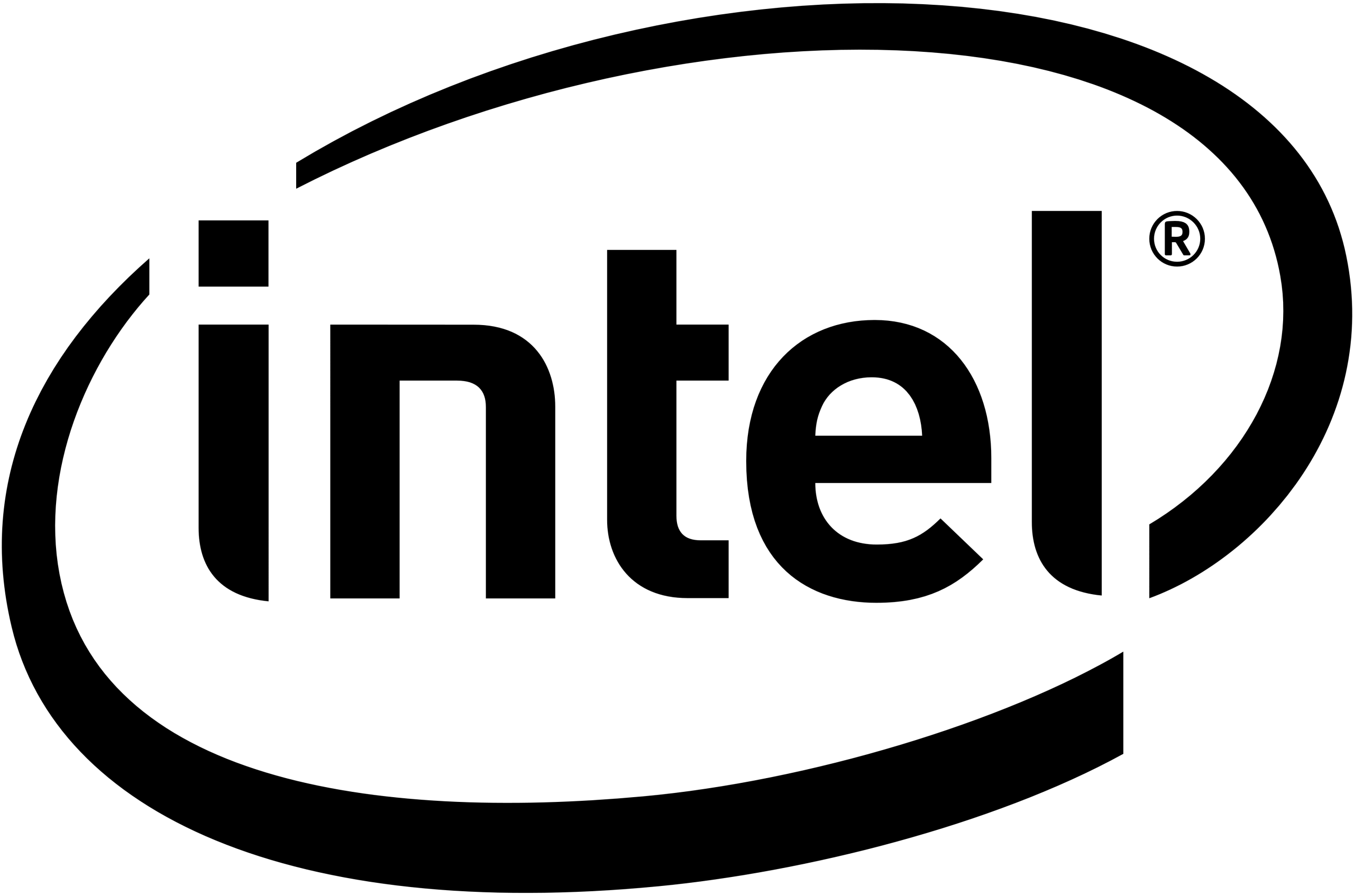Your cart is currently empty!
Intel Stock (INTC): A Semiconductor Giant in Transition

Overview of Intel Corporation
Intel Corporation (NASDAQ: INTC) is one of the world’s largest and most influential semiconductor companies. Founded in 1968 and headquartered in Santa Clara, California, Intel has long been a cornerstone of the global technology industry. Intel stock is best known for designing and manufacturing microprocessors that power the majority of the world’s personal computers and servers.
Over the decades, Intel has built a strong reputation for innovation, performance, and reliability. However, in recent years, the company has faced growing competition and a rapidly evolving semiconductor landscape, prompting a major transformation of its business model.
Intel Stock Overview
Intel stock (INTC) is traded on the NASDAQ and is a component of the Dow Jones Industrial Average and the S&P 500 index, making it a key player in both tech and industrial portfolios.
The Intel stock price is influenced by several key factors:
- Quarterly Intel earnings reports
- Global demand for semiconductors
- Competitive positioning vs. AMD, NVIDIA, and TSMC
- Capital expenditure on foundry and fab infrastructure
- AI, data center, and PC market trends
For investors, INTC provides a combination of dividend income and exposure to cutting-edge tech investments, though it also comes with execution risks during its strategic shift.
Intel’s Business Segments
Intel operates through multiple core business units:
- Client Computing Group (CCG): Desktop and laptop processors for consumer and business PCs
- Data Center and AI Group (DCAI): Server processors and AI accelerators for cloud and enterprise applications
- Network and Edge Group (NEX): Chips for telecommunications, edge computing, and 5G infrastructure
- Intel Foundry Services (IFS): Contract chip manufacturing for third-party clients, competing with TSMC and Samsung
- Mobileye: Self-driving technology subsidiary focused on autonomous vehicle systems
These diverse segments provide Intel with multiple growth avenues, particularly as it expands beyond traditional PC dominance.
Intel Earnings Performance and Financial Metrics
Intel earnings have shown a mix of resilience and volatility, reflecting both industry cycles and internal restructuring.
Recent Highlights:
- Revenue fluctuating due to weakness in the PC market and aggressive investments in foundry expansion
- Strong growth in AI and server-related chip sales
- Restructuring and cost-cutting measures to enhance profitability
- Return to profitability after key quarters of negative net income during the pandemic and supply chain crisis
Key Financial Metrics (approximate):
- P/E Ratio: ~30 (varies depending on quarter and outlook)
- Dividend Yield: ~1.5–2.0%
- Market Cap: Around $150–180 billion
- Debt-to-Equity Ratio: Moderate, due to recent capital investments
- R&D Spending: Over $15 billion annually
Intel’s solid cash flow and historical profitability support ongoing dividend payments, though future earnings will depend heavily on successful execution of its foundry and AI roadmap.
Intel’s Strategic Transformation
Intel is undergoing a massive business overhaul, dubbed the “IDM 2.0” strategy, aimed at re-establishing its leadership in chip manufacturing.
Key initiatives include:
- Building advanced chip fabs in the U.S. (Arizona, Ohio) and Europe
- Offering foundry services to external clients under Intel Foundry Services (IFS)
- Accelerating development of advanced process nodes like Intel 18A and 20A
- Collaborating with companies like Microsoft, Amazon, and ARM for foundry and design support
This strategic shift is essential for Intel to reclaim manufacturing leadership from TSMC and Samsung, and to capitalize on the global push for semiconductor sovereignty.
Intel in AI, HPC, and Edge Computing
Intel is investing heavily in AI, high-performance computing (HPC), and edge technologies:
- Launch of Gaudi AI chips targeting enterprise AI workloads (competing with NVIDIA)
- Development of Sierra Forest and Granite Rapids CPUs for cloud and hyperscaler data centers
- Advancing Flex Series GPUs for data visualization and training workloads
- Strategic focus on low-power, high-efficiency processors for smart devices and embedded AI
These innovations will be critical in shaping INTC’s stock price performance in the coming years.
Intel vs. Competitors
| Company | Core Focus | Competitive Position |
|---|---|---|
| Intel (INTC) | CPUs, foundry, AI chips | Diversified with strong R&D pipeline |
| AMD | CPUs and GPUs | Gaining desktop/server market share |
| NVIDIA | GPUs and AI hardware/software | Dominates AI training and inference chips |
| TSMC | Semiconductor foundry | Leads in process node innovation |
| Qualcomm | Mobile SoCs, 5G | Strong in mobile and IoT applications |
While Intel stock has underperformed rivals in recent years, its valuation remains compelling, especially if its turnaround is successful.
Dividend Policy and Shareholder Value
Intel has a long history of paying dividends, making it attractive for income-focused investors.
- Quarterly dividend payments remain consistent
- Stock buybacks have been reduced during capital-intensive phases
- Dividend coverage is supported by operating cash flow and asset monetization (e.g., Mobileye IPO)
Long-term investors view Intel as a hybrid between growth and value, with upside potential if execution improves.
Risks to Watch
Investors considering Intel stock should be aware of the following risks:
- Delays or underperformance in new chip process nodes (18A, 20A)
- Loss of market share to AMD and ARM-based chips
- Global recession dampening PC and server demand
- Rising capital expenditures and debt due to fab expansion
- Intense competition in AI chips from NVIDIA and custom silicon developers
Long-Term Outlook for INTC
Intel’s success will depend on its ability to deliver:
- Competitive, efficient chip architectures on time
- Profitable foundry services with external clients
- Breakthroughs in AI chip development
- Balanced capital spending with returns to shareholders
If the strategy succeeds, INTC stock may experience significant upside, positioning Intel as a true end-to-end chip provider for a data-driven world.
Intel and Government Semiconductor Support
Intel has become a strategic player in global tech policy as governments push for semiconductor self-sufficiency. The U.S. CHIPS and Science Act has enabled Intel to secure billions in subsidies for building new fabrication plants in Ohio, Arizona, and Oregon. This government-backed investment improves long-term visibility for Intel stock and signals its geopolitical importance.
Intel’s Mobileye Spin-Off and Valuation Boost
Intel’s autonomous driving unit, Mobileye, was spun off in a successful IPO, but Intel retains majority ownership. This move:
- Unlocked shareholder value
- Allowed Mobileye to operate independently while benefiting from Intel’s resources
- Enhanced INTC’s balance sheet and boosted strategic optionality in autonomous tech
Mobileye continues to grow and compete with Tesla Autopilot, NVIDIA Drive, and Waymo — contributing positively to Intel’s valuation narrative.
Intel vs AMD: The Battle for CPU Dominance
Intel is locked in fierce competition with AMD in both the desktop and server processor markets. While AMD’s Zen architecture has outpaced Intel in recent years, Intel is making a comeback with:
- Meteor Lake and Lunar Lake processors targeting performance per watt
- New hybrid core architectures to improve battery life and efficiency
- Advanced manufacturing nodes (Intel 4, Intel 3) set to rival TSMC’s 5nm tech
Intel’s ability to regain CPU market share will be a major driver of INTC stock price performance.
Use Cases: Who Should Consider Intel Stock?
Intel stock is suitable for various investor types:
| Investor Type | Reason to Invest in INTC |
|---|---|
| Dividend Investors | Steady payouts and potential yield growth |
| Value Investors | Undervalued compared to peers like NVIDIA and AMD |
| Long-term Tech Bulls | Exposure to U.S. fab resurgence and AI transformation |
| Conservative Investors | Established brand, strong cash flow, government support |
Intel may not be as fast-moving as NVIDIA in the AI space, but it offers stability with upside potential.
Technical Analysis Insights
Technical traders observe that Intel stock has historically found support near key moving averages and Fibonacci retracement levels. A sustained breakout above recent resistance (~$40–$45 range) could attract institutional momentum, especially as AI data center demand surges.
Traders also monitor:
- Earnings release dates
- Guidance and forward-looking commentary
- Gross margin and capex projections
- Client demand from hyperscalers like Amazon, Microsoft, and Google
Intel’s R&D and Innovation Strategy
Intel invests over $15 billion annually in research and development, making it one of the largest R&D spenders in the semiconductor industry. This aggressive investment supports:
- Advanced processor designs (Meteor Lake, Lunar Lake, Panther Lake)
- Next-generation fabrication technologies
- AI inference and training accelerators
- Silicon photonics and quantum computing research
- Sustainable chip manufacturing
Through its Intel Labs, the company is also exploring future computing paradigms like neuromorphic computing, which mimics the human brain, and cryogenic computing, aimed at enabling scalable quantum systems.
This commitment to innovation ensures that Intel stock is not only backed by a legacy but is also future-ready.
Intel’s AI Ecosystem and Market Position
While NVIDIA dominates the current wave of AI training chips, Intel is rapidly building its AI portfolio:
- Gaudi2 AI chips from Habana Labs target large-scale AI models at a lower cost than GPUs
- Sapphire Rapids processors include built-in AI acceleration for datacenter workloads
- OpenVINO toolkit helps developers deploy AI models on Intel hardware across edge devices
Intel’s AI roadmap focuses on AI for enterprises and data centers — a different lane from NVIDIA’s focus on high-end AI labs. This differentiation gives Intel a unique opportunity to democratize AI infrastructure.
Intel’s Role in U.S. Tech Sovereignty
Intel is at the center of America’s push for semiconductor independence:
- The CHIPS and Science Act has unlocked over $19 billion in U.S. government funding for Intel’s fab expansions
- Intel is building two major fabs in Ohio and expanding its Arizona and New Mexico sites
- These fabs will produce cutting-edge logic chips using Intel 18A and Intel 20A nodes
By becoming a trusted U.S. foundry, Intel aims to reduce American reliance on Asian chipmakers like TSMC and Samsung. This role enhances the strategic appeal of INTC stock to institutional and ESG-focused investors.
Financial Strength and Capital Allocation
Intel has maintained strong financial discipline despite heavy capital expenditure:
- Cash and short-term investments exceed $20 billion
- Operating cash flow remains strong even during down cycles
- Capital expenditure (CapEx) is rising sharply as Intel builds new fabs (~$25–30 billion annually)
- Intel continues to pay dividends and recently optimized its debt structure to support long-term investments
Intel has signaled it will prioritize capex over buybacks, aligning its strategy with long-term growth. While some investors may prefer aggressive repurchases, others see this as a responsible reinvestment into national tech infrastructure.
Intel’s Global Presence and Supply Chain Resilience
Intel operates manufacturing, design, and R&D facilities across the globe:
- United States: Arizona, Oregon, New Mexico, Ohio
- Ireland: Flagship fab expansion in Leixlip
- Israel: Chip development and Mobileye headquarters
- Malaysia and Vietnam: Assembly and testing hubs
- Germany and Poland: Upcoming fabs and packaging plants
This globally distributed footprint makes Intel more resilient to regional disruptions. It also positions Intel as a partner of choice for governments seeking to localize semiconductor manufacturing.
Conclusion: Is Intel Stock a Buy?
Intel stock (INTC) offers a unique opportunity for investors who believe in technology transformation and U.S.-based semiconductor resurgence. With its bold investment in manufacturing, growing focus on AI, and a long-standing reputation for reliability, Intel is poised for a possible comeback.
For investors who are patient and willing to ride through a transition phase, INTC can be a strategic long-term addition to a diversified tech portfolio — particularly for those seeking dividends and exposure to infrastructure-level innovation.
Related Pages on RajeevPrakash.com

Mr. Rajeev Prakash
Rajeev is a well-known astrologer based in central India who has a deep understanding of both personal and mundane astrology. His team has been closely monitoring the movements of various global financial markets, including equities, precious metals, currency pairs, yields, and treasury bonds.
